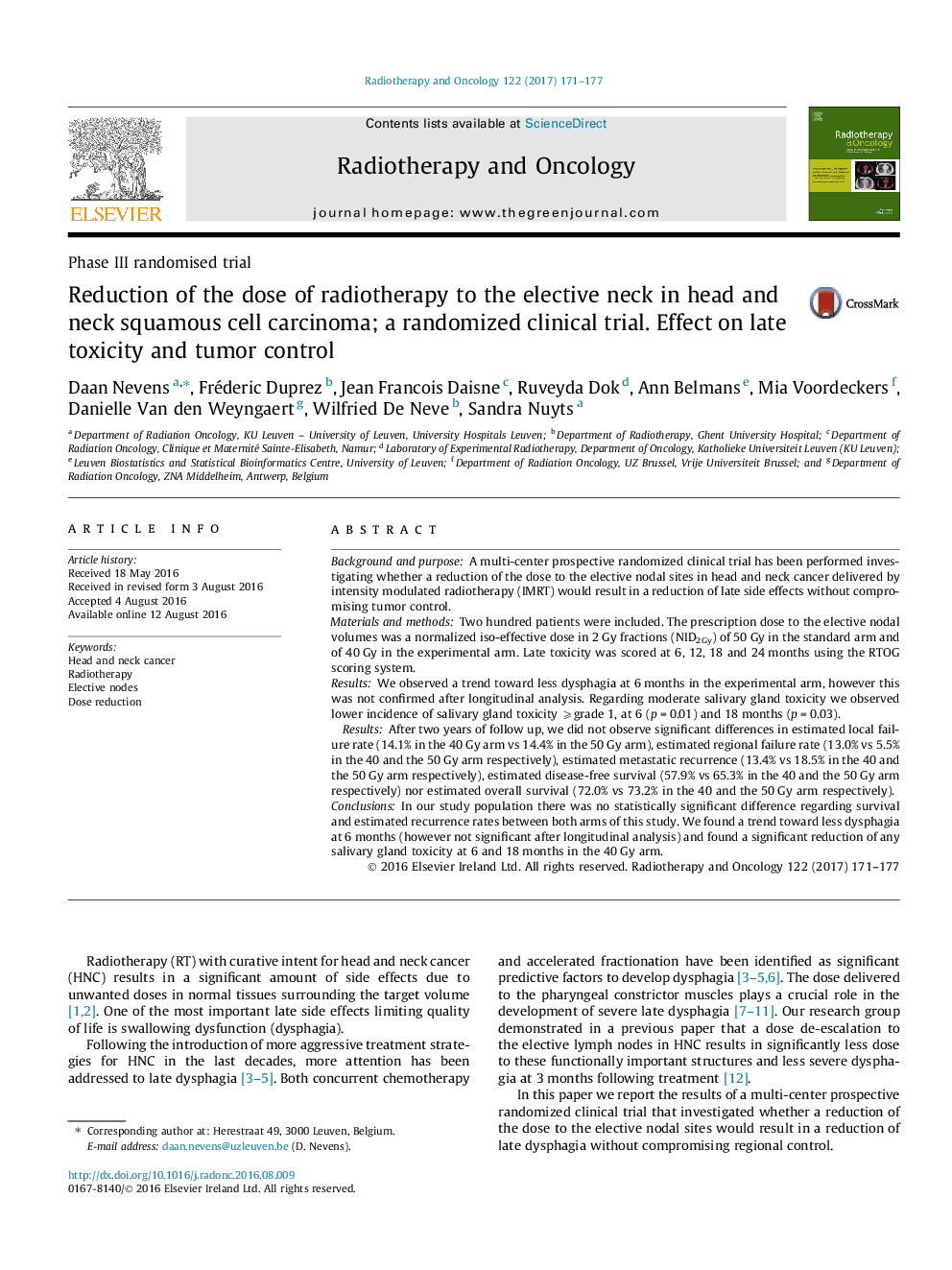| کد مقاله | کد نشریه | سال انتشار | مقاله انگلیسی | نسخه تمام متن |
|---|---|---|---|---|
| 5529589 | 1401703 | 2017 | 7 صفحه PDF | دانلود رایگان |

Background and purposeA multi-center prospective randomized clinical trial has been performed investigating whether a reduction of the dose to the elective nodal sites in head and neck cancer delivered by intensity modulated radiotherapy (IMRT) would result in a reduction of late side effects without compromising tumor control.Materials and methodsTwo hundred patients were included. The prescription dose to the elective nodal volumes was a normalized iso-effective dose in 2 Gy fractions (NID2Gy) of 50 Gy in the standard arm and of 40 Gy in the experimental arm. Late toxicity was scored at 6, 12, 18 and 24 months using the RTOG scoring system.ResultsWe observed a trend toward less dysphagia at 6 months in the experimental arm, however this was not confirmed after longitudinal analysis. Regarding moderate salivary gland toxicity we observed lower incidence of salivary gland toxicity ⩾grade 1, at 6 (p = 0.01) and 18 months (p = 0.03).After two years of follow up, we did not observe significant differences in estimated local failure rate (14.1% in the 40 Gy arm vs 14.4% in the 50 Gy arm), estimated regional failure rate (13.0% vs 5.5% in the 40 and the 50 Gy arm respectively), estimated metastatic recurrence (13.4% vs 18.5% in the 40 and the 50 Gy arm respectively), estimated disease-free survival (57.9% vs 65.3% in the 40 and the 50 Gy arm respectively) nor estimated overall survival (72.0% vs 73.2% in the 40 and the 50 Gy arm respectively).ConclusionsIn our study population there was no statistically significant difference regarding survival and estimated recurrence rates between both arms of this study. We found a trend toward less dysphagia at 6 months (however not significant after longitudinal analysis) and found a significant reduction of any salivary gland toxicity at 6 and 18 months in the 40 Gy arm.
Journal: Radiotherapy and Oncology - Volume 122, Issue 2, February 2017, Pages 171-177